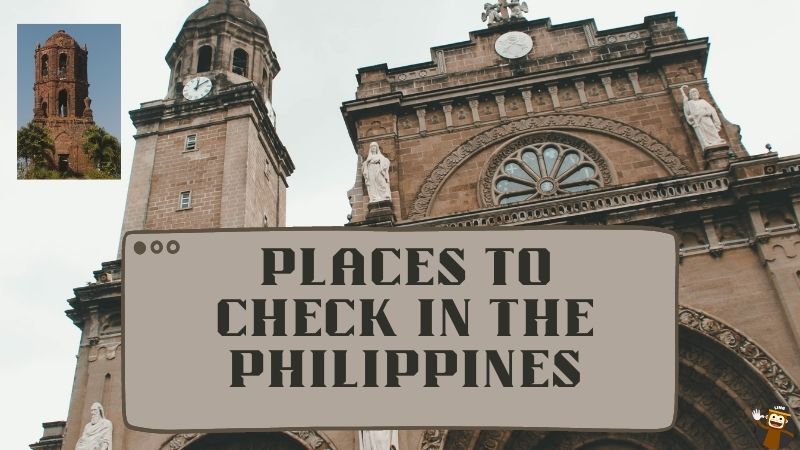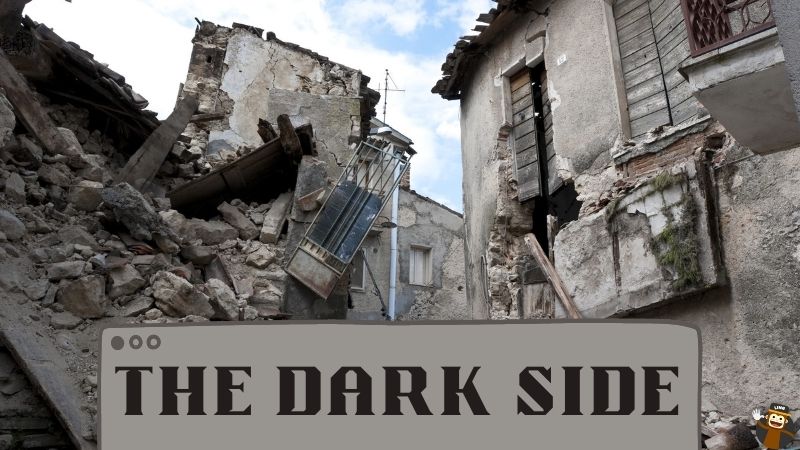You must know a lot about the Philippines by now, but are you aware of their daily life routines? In this blog post, we will unlock another level of knowing the Philippine culture. Learn all that you need about the daily life in the Philippines.
The Daily Life In The Philippines
If you are wondering about the Filipino diaspora, their interesting history (which can also help you with learning Tagalog better), the country’s amazing places, its dark side, and Filipinos’ unique way of living their lives, then you are at the right blog post!
The geographical location of the Philippines is in Southeastern Asia between the South China Sea and the Pacific Ocean. History says that the Philippines got its name after King Philip II of Spain. After World War II, the Philippines was declared an independent nation in 1946. The National Capital Region of the Philippines is Manila and Quezon City. Manila is a densely populated area, while Quezon City is the largest city in the Philippines.
Reasons To Visit The Philippines
Here are the reasons why you should visit the Philippines:
- The Philippines is actually the best place to visit to enjoy a vacation away from work.
- It is culturally diverse and astounding culture and has a population of 1.9 million people, so there would be a lot of cultural recreation activities.
- Its monumental landscape and infrastructure make the country breathtaking and scenic.
- It is also one of the countries with the best doctors and medical physicians available, and the country has some of the best artists from around the world, including the best sculptures.
- It’s also culturally rich in music, which ranges from hip hop to modern pop, along with classical, traditional music, and opera.
Ethnicity In The Philippines
The Philippines is rich in a variety of religions and beliefs, ranging from Islam, Christianity, Buddhism, and various other beliefs.
Around 134 ethnic groups are present in the Philippines. Ethnic groups are considered important for the country’s representation. Collectively, the country binds them all together as ethnic groups and encompasses more of their history, language, tradition, and culture. 86% of the population is Roman Catholic. One of the biggest Roman Catholic churches in Asia is present in the Philippines (Taal Basilica).
Here’s another interesting fact, the median age in the Philippines is 25.7 years.
Know All About The Philippines And Its People In Just 5 Minutes!

This article will give you all the inside about the Philippines and how its people’s everyday lives go on, along with the language, culture, clothing, food, and holidays which they celebrate.
There are a total of 120–134 languages spoken in the Philippines, but the official languages of the Philippines are Filipino and English. The 5 most prominent languages are Tagalog, Cebuano, Ilocano, and Hiligaynon.
Filipinos are known for their skills as hard workers and are passionate about attempting their tasks. Men and women work day and night. They get a total of 6 hours of sleep, and the rest of the time, they work.
The Living Standards And Clothing Of The Philippines
European designs are modern wear for the Philippines. There are famous garments that differ in communities and regions. One is called “Malong.” It is a woven tube cloth that is colorful and is made of different varieties for men and women. It is also a characteristic of Muslim societies in Mindanao. For casual and simple events, men wear a common shirt known as a “barong,” which is an embroidered shirt.
At special events, women wear a dress called “Tern.” It’s covered with a butterfly design, with sleeves that rise to the shoulders and extend near the elbow. Smaller groups have different clothing for their events.
Sports And Outdoor Activities
Sports were introduced to the Philippines by Americans and Europeans. Basketball is a popular sport in the Philippines. Other sports like golf, tennis, and various sports that are aquatic, such as diving, are also practiced in the Philippines.
Competitive competition like martial arts, which also includes Taekwondo, boxing, and wushu, is a tradition amongst the people of the Philippines. Several medals have been won by the Philippines in the competitions between Asia and Southeast Asia.
Filipinos are also successful in boxing, swimming, and track and field games and participate regularly. They participated in the Summer Olympic Games in 1924 and 1972 and in the winter games too.
Places To Check In The Philippines

The capital of the country, Manila is one of the most amazing places to visit during touring. It’s also the blazing heart of the country, filled with skyscrapers rising across the Asian city. It has modern parks, malls, and hotels with the best hospitality.
- Places to stay in Manila areOkada Manila, Red Planet, Aurora Boulevard, Conard Manila, Fairmont Makati, and the Peninsula Manila.
- Places to visit in Manila are Fort Santiago, Pinto Art Museum, Ayala Museum, Manila MuseStay, American Cemetery, San Agustin Church, Chinese Cemetery, and the National Museum of the Filipino People.
Family System In The Philippines
In the Philippines, family bonds are very strong. Loyalty, respect, and affection have made families stay longer. Rather than pursuing their own goals, family members follow the rules of the household.
Joint families are very common, and kids are compelled to live with their parents. They prefer to have extended families. As there is a tradition that all children inherit property equally, the house will only be given to the child who looks after his or her parents.
A positive quality of Filipino culture is that they are quite welcoming.
Everyday Food In The Philippines
Have you ever tried Filipino food like Filipino Chicken Adobo? Well, I’m not surprised if you haven’t tried Filipino food since, for whatever reason, it has not been known as Japanese, Korean, Vietnamese, or Thai food. So what exactly is Filipino food?
Well, visitors mistakenly assume the cuisine to be Spanish cuisine, and others will recognize Filipino-style burgers, hot dogs, and fried chicken as localized variations of American fast food and not Filipino food. As a result, of the country’s colonial heritage, Filipino cuisine has improved and evolved into a mash-up of eastern and western cuisine.
The middle-class community usually eats boiled rice with vegetable dishes, while the upper class likes to eat roasted pig. The staple foods of the Philippines are rice and fish.
Major Holidays In The Philippines
Independence Day in the Philippines is celebrated on July 4th. It is also America’s Independence Day. Tuesday, June 12, was declared a public holiday throughout the Philippines.
On August 4th, 1964, Republic Act number 4166 was renamed July 4 as the Philippines Republic, which is celebrated by all citizens of the Philippines.
Philippines-American Day was established in November on the basis of the inauguration of the Commonwealth of the Philippines. Later on, Philippine-American Day was replaced by Philippine-American Friendship Day, which was then moved to July 4th, so both Philippine-American Day and Republic Day were celebrated at the same time.
Clothes In The Philippines
Clothes in the Philippines are beautiful. Tribal Philippines mostly wears woven clothes, often beadwork and other ornam a type of collarless shirt- which was later combined with laces, trimmings, and buttons. Moreover, Bahag was a type of G-string.
Due to climatic change, Filipinos often wear T-shirts and jeans, which were introduced by Americans. During rainy seasons and cold evenings, Filipinos intend to wear hooded jackets. The rich people like to wear barong Tagalog (shirts with long sleeves, collars, and embroidery), while the middle class wears normal shirts with jeans, and women wear skirts.
Medical Services In The Philippines
The Philippines has well-trained and maintained medical services. They can provide the same quality of service as any other high-quality hospital in your home country.
However, the Philippines has more than 6,000 islands and 19,000 miles of coastline. Remote areas do not have up-to-date utensils and staffing levels that are required, but this may vary from region to region to check on its services.
The Philippine health insurance corporation, which is mostly known as PhilHealth, has set a target to achieve quality care for locals and foreigners to come.
Private And Public Healthcare Services In The Philippines

Public hospitals and other facilities tend to handle most of the primary care in the Philippines. Private sectors handle extra-ordinary healthcare issues like cardiovascular disease or plastic surgery.
The public sector will provide free services and take care of your basic healthcare, while the private sector mainly seeks to give its patients extra care, but you’ll have to pay for it even more than expected because not everyone can afford a private sector facility in the Philippines. If you’re coming to visit the Philippines, it is better that you go to a private hospital as you can get an English-speaking doctor there.
Mental health treatment, even for addiction purposes, is relatively easy to gain. They provide psychiatrists that would treat and hear your difficulties out. This type of care is mostly unavailable in the rural areas of the Philippines.
Disastrous drug violence has caused multiple deaths of drug users, but the use of drugs still continues, while the effort to remove drugs has always been underfunded and not organized well.
Yet, there are a few who are taking action on this matter to remove drug abuse from the Philippines, and there has been a minor success in that by the end of 2030 there won’t be any sort of drug abuse anymore.
Rural And Urban Areas Of the Philippines
A large portion of the Philippines’ population lives in rural areas called barangays with five municipalities included in urban areas. But now, with the advancement of Filipinos. They have started moving towards urban areas for good schools, jobs, etc. In urban areas, more facilities are available for people due to the fact that they have started to migrate from rural to urban areas.
Schools Of The Philippines
Like in other Asian countries, there is a difference between public and private schools. This difference also exists in the Philippines. Private schools are small in size, but they provide much better education and facilities for their students. While public schools are large in size, the facilities are small and many children go to public schools.
The education system of the Philippines has been divided just like other Asian countries have been divided. Students first learn education from primary schools, then secondary schools, as secondary schools are further divided into two parts.
- Secondary school
- Upper secondary school
Students go to school for primary and secondary education, and after twelve years of education, they opt for higher education. Higher education starts after upper secondary school (12th). With the advancement, now students in the Philippines prefer e-learning for higher education. Around 8.5 million students are enrolled in 2022 e-learning.
Celebrations In Philippines
Filipinos spend their celebrations full of joy, just like on Independence Day. They take a day off from work and hang Filipino flags in the streets. A further parade is conducted. Ads and programs related to Independence Day are shown on television. In schools, students prepare a performance in the remembrance of their great soldiers.
On New Year’s Day, it is a public holiday, so every Filipino can enjoy it. In the Philippines, New Year’s Day is celebrated with full joy. People decorate homes and prepare different meals.
The Dark Side Of Living Conditions In The Philippines

There is also a dark side to the daily life of this beautiful country. Let’s learn about that too.
Family Size And Poverty
Family members in greater numbers in the Philippines are at risk now since they prefer to live as a joint family in a house. The size of houses is smaller and an entire family can be fitted into them. The elderly members of the family must earn more money to survive in a nation where there is rising inflation, a lack of jobs, and income inequality. It is estimated that 5 out of 10 Filipinos have poor jobs due to a lack of proper education needed to attain a good one.
The poor in the Philippines don’t have access to water, electricity, or any sort of proper sanitation. The necessities of health and education play a huge role in escaping poverty. However, the majority of the Philippines’ households do not have the proper stability.
Natural Disasters
A nation that is surrounded by water is always at risk of natural disasters or flooding. The country of the Philippines always suffers from storms, earthquakes, tsunamis, and volcanic eruptions. Surprisingly, government officials have taken action with the help of USAID and some non-governmental organizations that help the country with the hope of decreasing the percentage of disasters that might occur in the future.
Feuds
One of the three largest islands is named Mindanao, where a feud between two groups has left the island in ashes. Damage and disasters have left the community with no home or shelter to live in. However, there is hope that the government is looking after the poverty areas in the Philippines and will hopefully reduce them by 20% more by the end of 2022.
Wrapping Up
Well, this was the basic guide to the Philippines and an inside look at daily life in the Philippines. If you want to learn more about the Philippines then download the Ling App which is available in both the App Store and Google Play, or check out the language blog to learn Tagalog!
Happy Learning!

















